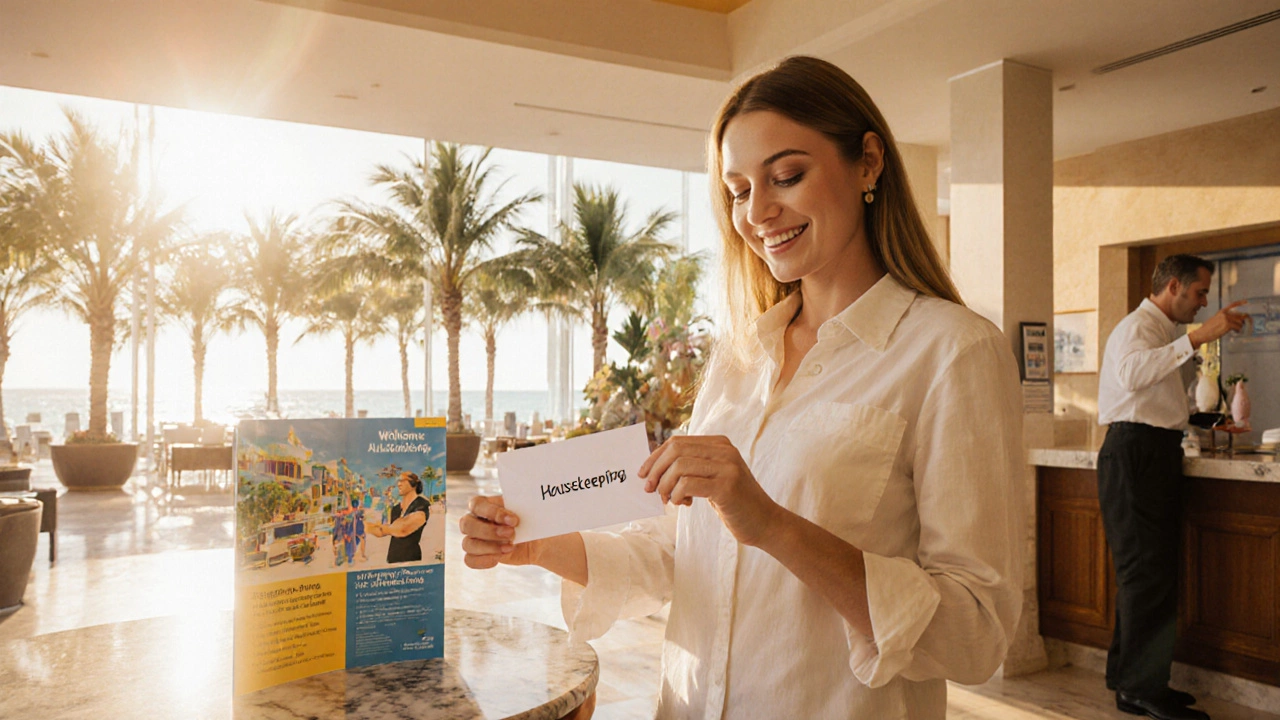Learn when, how much and why you should tip housekeeping at all‑inclusive resorts, with regional guidelines, budgeting tips and cultural etiquette.
Resort Gratuity: What Travelers Need to Know
When planning a stay, resort gratuity, the optional tip you may leave for staff at a resort. Also known as tip, it often sits alongside other payments such as tips, small amounts given for personal service and a service charge, a fee sometimes added to the bill to cover staff wages. The hospitality industry, businesses that provide lodging, food, and recreation uses these concepts to reward workers and cover costs. Understanding how they interact helps you avoid surprise charges and plan a realistic vacation budget.
How Resort Gratuity Impacts Your Budget
Resort gratuity influences overall vacation budgeting because it adds an extra line item that isn’t always obvious when you first see the price. Many travelers overlook the fact that a 10‑15% tip on restaurant bills, spa treatments, and housekeeping can quickly add up. By factoring in resort gratuity ahead of time, you can set a daily allowance that covers meals, activities, and optional tips without blowing your budget. A simple rule of thumb is to allocate 5‑10% of your total daily spend for gratuity; this works whether the resort uses a built‑in service charge or leaves tipping to guests. Remember, some all‑inclusive resorts already include a service charge, so you may not need to tip extra unless service exceeds expectations.
Resort policies often dictate the service charge amount, and those policies can differ by country, brand, or even individual property. In the UK, many upscale resorts add a 12.5% service charge to restaurant tabs, while in the US, it’s more common to see a “no‑service‑charge” policy that relies entirely on guest tips. Knowing the local norm prevents awkward moments at checkout and ensures you’re rewarding staff fairly. When a resort lists a mandatory service charge, that fee usually replaces the need for a separate tip, but you can still tip for exceptional service – think personalized concierge help or a memorable spa experience.
Travelers use tips to reward exceptional service, and the amount they give often reflects cultural expectations. In some Caribbean resorts, a 10% tip on meals is standard, whereas in parts of Asia, tipping may be less common and even discouraged. By researching the destination’s tipping etiquette, you avoid over‑ or under‑paying. Additionally, many resorts provide tip envelopes at the front desk or in the room, making it easy to leave a small amount for housekeeping without having to carry cash around. If you’re unsure, ask the reception staff about the preferred method – they’ll appreciate the effort to follow local customs.
Service charge can replace or supplement gratuity, creating a hybrid model that many resorts adopt. For example, a resort might add a 15% service charge to all restaurant bills but still encourage guests to tip waitstaff for personalized attention. In such cases, the service charge helps cover baseline labor costs, while tips reward extra effort. Understanding this hybrid approach lets you decide when an additional tip is warranted and when the service charge already covers staff wages. Keep these nuances in mind as you plan your next getaway, and you’ll walk away feeling confident about every payment you make.
Below you’ll find a curated selection of articles that dive deeper into budget‑friendly accommodation types, hygiene standards in love hotels, glamping sleep options, and more. Each piece connects back to the core ideas of resort gratuity, tipping etiquette, and budgeting so you can get a well‑rounded view of how to manage costs while enjoying a great stay.
